Nikon D600 dust problem solved; owners get the repair they’ve been waiting for
posted Tuesday, February 25, 2014 at 11:01 PM EST
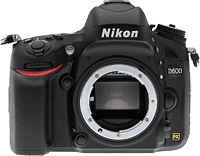
There's huge news today for owners of the Nikon D600 digital SLR -- and the news couldn't be much better, either! Through a just-issued technical service advisory, Nikon USA has announced plans to fix the camera's much-discussed sensor dust woes, regardless of warranty status. (UPDATE: And overseas Nikon branches are also making similar announcements; links can be found at the end of this article.)
First uncovered just weeks after the camera was announced, the Nikon D600 dust problem is typically most prevalent early in the camera's life. Testing by the likes of LensRentals' Roger Cicala and Toronto photographer Kyle Clements suggested that the shutter mechanism in the D600 was shedding dust and/or oil, which then adhered to the surface of the sensor assembly, especially on the left hand side. And while their tests also suggested that the problem largely resolved itself after the first several thousand shots, these debris splatters could be very difficult to remove with the typical sensor cleaning techniques available to photographers. (Suggesting that oil, vs dust was the most likely source of the problem, as oil would resist the aqueous cleaning solutions available to most photographers.)
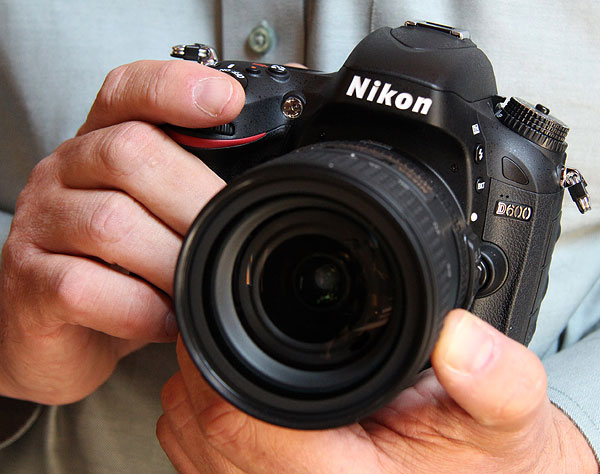
Until now, Nikon's only advice for photographers facing the issue has been to return cameras for cleaning under its warranty program. For obvious reasons, that wasn't wholly satisfactory -- either you had to return your camera multiple times, or wait for new dust to stop appearing before requesting service. And to the best of our knowledge, while not every D600 was necessarily affected, there was no cutoff point in production after which the problem could be said to have been resolved either. (Or at least, that cutoff came only with the introduction of the followup Nikon D610.)
Now, the company is stepping up to bat with a more satisfying (and hopefully, permanent) solution for D600 owners. According to the service advisory, D600 owners facing the problem will be able to return their cameras to Nikon at the company's expense, simply by supplying their serial number and printing a return label. As well as cleaning the sensor cover glass to remove dust and oil spots, Nikon will also be replacing the shutter assembly as needed -- and we're speculating here, but most likely the replacement assembly will be the same as that used in the D610, which seems not to suffer the same issue.
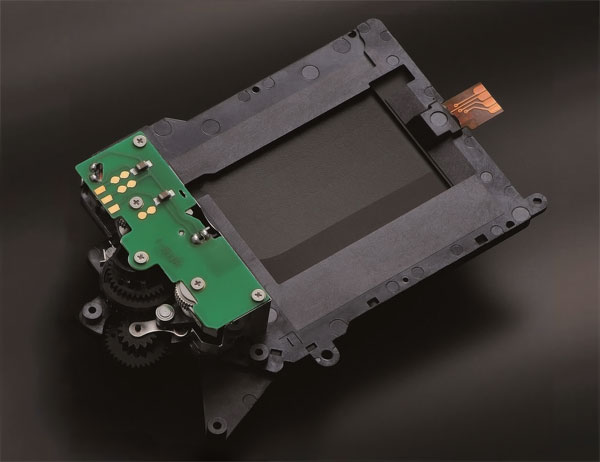
It's important to note that this isn't a recall, per se, but rather an optional service program. Not every D600 necessarily has the problem, and even if your camera was affected initially, once the problem has abated there's no reason to spend time without it. (At least, not if you've been able to clean the dust spots yourself, or had it done by Nikon already). So not everyone who has a D600 will necessarily need or want to ship it in. And that's doubly true because Nikon may very well get flooded with returns in the early days of the service program, as a rush of photographers return their gear at once.
Hence if you've not noticed a problem it makes sense to just go on shooting -- and even if you are affected, it may actually make sense to wait a little while before requesting service. That way, you won't be without your D600 for an extended period. (We're sure Nikon's going to do everything they can to turn cameras around quickly, but if even a fraction of the D600s they've shipped show up on their doorstep all at once next week, we can't imagine there not being delays -- possibly lengthy ones. Big kudos to them if not, but you might be well-served to wait and see how things go in the early going.)
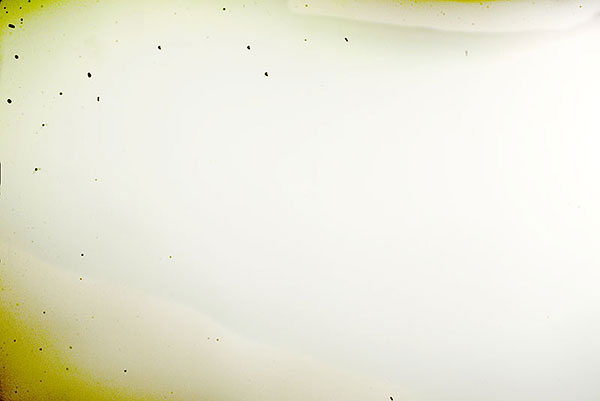
(Contrast and exposure tweaked to emphasize dust; image courtesy Roger Cicala)
It may be tempting to believe that the service program has been prompted by recent news of a class action lawsuit against Nikon, but that's almost certainly not the case. Note that although news of the lawsuit surfaced only a week ago, Nikon is starting to accept returns immediately. Before it could begin taking cameras back for repair, though, the company will have needed to set up a service program able to handle the large number of D600s out in the market -- and that's something which takes time. Not only does the manpower need to be found to undertake a relatively complex, time-consuming (and we're guessing, rather expensive) repair that requires service technicians to dismantle and reassemble much of each camera they receive, but a supply of replacement parts must be procured -- and quite likely, manufactured, given that the shutter maker likely wasn't anticipating sudden extra demand.
And that brings up another point. It's quite likely that some negotiation was needed between Nikon and its supplier as to where the responsibility for this fault would lie. (And hence, which company would bear the cost.) We don't know with certainty which company is supplying the shutter in the D600, but it's very common for camera makers to rely on outside expertise for this complex part.

(Image courtesy of Roger Cicala)
In fact, in an age where so much expertise is needed due to the complexity of modern cameras, relying on third parties is simply par for the course -- and when multiple companies are involved, it can take some time to determine liability when a problem does rear its head. For the proof of this, one need look no further than the problems faced by a dozen different camera makers almost a decade ago, when incorrect settings on a wire-bonding system led to mass failures of Sony-produced CCD image sensors. That problem, like this one, took some time to resolve -- but the important thing was that a resolution was eventually reached.
The identity of the company that might bear responsibility for the D600's issues is a point of which we can't be certain. While there have been a number of D600 teardowns, none has identified a specific shutter maker -- or at least, not as a matter of public knowledge. As of 2009, shutter maker Copal was said to be supplying 90% of mechanical shutters globally, but there are certainly other suppliers out there. As of this writing, the company itself claimed a 70% market share, in a Thai job posting. And we know the company has a long history with Nikon, going back at least as far as the 1970s. All we can say for sure is that it's fairly unlikely that it's an in-house part -- and so Nikon itself could to some extent be seen as a victim of the problem, too.
It's also worth noting that this service program is a really great example of why you don't want to buy grey-market products. While the advisory doesn't speak to this point, we'd be very, very surprised if Nikon doesn't require cameras to be serviced in their country of origin, as determined by their serial numbers. Reputable dealers like Adorama and B&H will sometimes sell grey-market products if the customers specifically want them, but they always disclose what customers will be getting upfront. Some unscrupulous dealers, though, will sell grey-market cameras without first notifying customers. And once that happens, you're quite likely saddled with the cost of returning your camera to the country from which it was imported. (Or arguing with the reseller; good luck with that...)
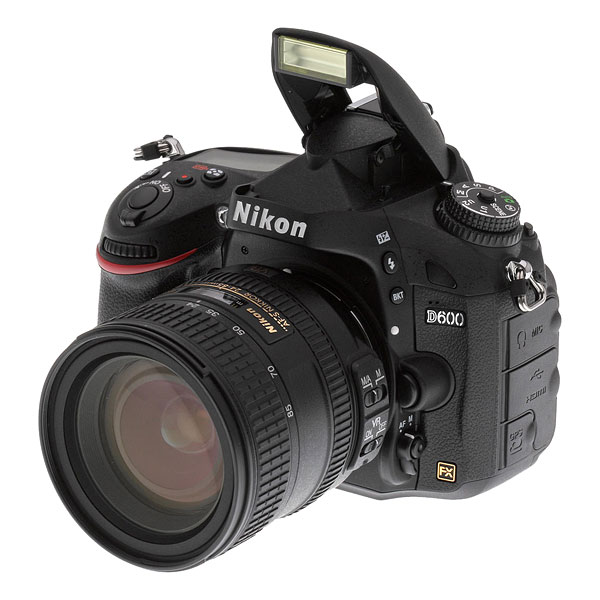
Be all this as it may, we're just glad to see some definitive action being taken to bring satisfaction to D600 shooters. We found much to like in our review of this relatively affordable, full-frame shooter, as well as that of its followup. Ever since the arrival of the D610, though, we've felt for D600 owners who suddenly saw their cameras superseded by a near-identical model -- and that can't have been a nice feeling if you were among those faced with problems. With the launch of the service program, you now have a definitive solution -- and you can get back to enjoying shooting with what's otherwise been a very commendable camera.
While it took a little while to get here, we'll give Nikon a thumbs-up on this one, given that there was almost certainly another company involved, fighting tooth and nail to minimize their own expense in the matter -- and particularly given that Nikon is offering to repair cameras whether or not each camera's warranty is officially still in force or not. Some will say "well, of course, that's the right thing to do", but companies sadly don't always do the right thing in practice. Happily Nikon did here.
And we, hopefully, can stop reporting on a problem that we've covered so many times over the last couple of years. Good news all around, we think you'll agree!
The full technical service advisory, courtesy of Nikon USA, follows below. Customers in other markets will want to check the service advisories from Nikon Asia, Nikon Australia, Nikon Canada, Nikon China, Nikon Europe, Nikon Hong Kong, Nikon Japan, Nikon New Zealand, Nikon Singapore, and Nikon South Africa. Customers in other markets should check the Nikon Worldwide Network page for their local Nikon agent to obtain information on their local situation as regards D600 service.
Technical Service Advisory for Users of the Nikon D600 Digital SLR Camera
Thank you for choosing Nikon for your imaging needs.
Affected Products: Nikon D600 Digital SLR Cameras
Some users of Nikon’s D600 D-SLR camera have reported the appearance of tiny spots on certain of their images. Not all users have experienced this issue. Nikon has thoroughly evaluated these reports and has determined that these spots are caused by dust particles which may become visible when the camera is used in certain circumstances and/or with certain settings. It is a well-known fact that the presence of dust particles cannot be completely avoided when using a D-SLR camera even after
normal sensor cleaning procedures, because of a number of factors including components moving at high speeds when images are taken, the use of interchangeable lenses, and the different environments in which a D-SLR camera may be used. As part of its customer-service commitment, Nikon is providing a customer-service measure to reduce the potential impact of dust particles on images taken by its D600 D- SLR cameras.
The solution: Nikon is making available to all owners of D600 cameras (even if Nikon’s product warranty has expired) this customer-service measure, which includes the inspection, cleaning and replacement of the shutter assembly and related parts of your camera, FREE OF CHARGE as well as the cost of shipping D600 cameras to Nikon and their return to customers. Once again, please understand that regardless of this service, your D600 camera as is the case with all D-SLR cameras, will continue to require normal periodic sensor cleanings.
To have your D600 camera serviced free of charge please follow the steps below:
- Click on the Schedule Free Service link below.
- On the following pages, you will need to provide the serial number of your D600 camera and your contact information.
- Then, you will be prompted to create and print your pre-paid UPS return label and packing slip.
- In shipping, please secure the D600 camera in a plastic bag inside the shipping box with several inches of quality packing material on all sides of the D600 camera. Please send your D600 camera and packing slip only. Do not include any lenses, batteries, memory cards or other accessories. Please do not ship in the original display box (It will not be returned).
- Drop the shipping box off at any UPS facility. (Visit https://www.ups.com/dropoff for hours and locations.) You may also arrange to have your shipment collected by a UPS driver. Nikon will notify you by email when your D600 has been received at Nikon’s repair center. Nikon will notify you by email when the service is complete and ship your D600 camera back to you free of charge via UPS Ground.
- We sincerely apologize for any inconvenience this issue may have caused. Nikon remains committed to providing only the highest quality cameras and components, and we hope that you will continue to choose Nikon for your photography needs.
Contact
If you have any questions, please contact Nikon Customer Relations by phone at 1-800-Nikon US (1-800-645-6687), 9AM–8PM EST, Monday to Friday (closed certain holidays) or online here.